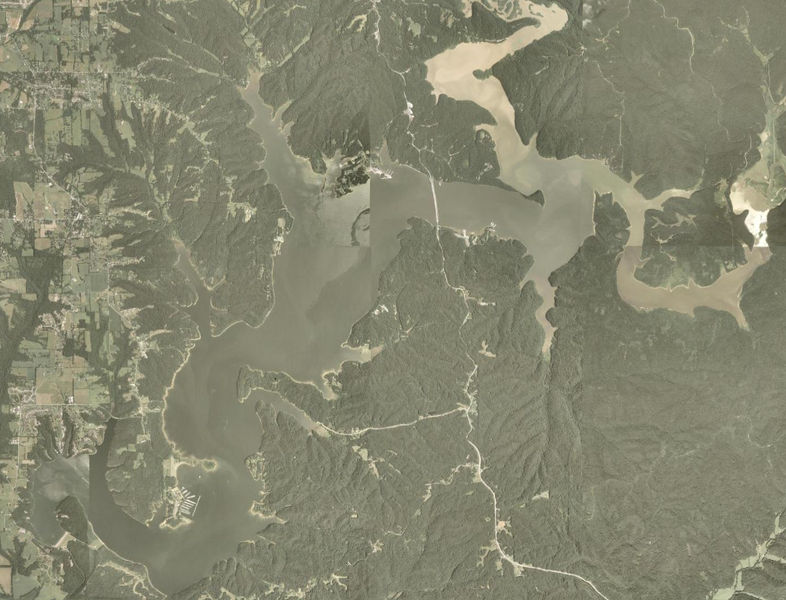Indiana’s Lake Monroe goes beyond ‘Dead Sea’ nickname
Lake Monroe, the largest reservoir wholly within the state of Indiana, has frustrated enough bass anglers to earn an unflattering nickname: the Dead Sea.
Terry McWilliams, an Indianapolis-based fishing guide and tournament angler, says that’s by no means the case.
“It’s one of those lakes that you either love it or hate it,” said McWilliams. “I love it. There are days that I hate it, but I love going back to it. It’s got some big fish in it.”
McWilliams has fished the 10,000-acre Lake Monroe outside Bloomington since 1967, just two years after the work to create the flood control and water supply reservoir was completed. He says the fishing can be tough at times, but he’s seen some impressive weights come of out tournaments there. That includes 28-pound and 33-pound strings he reeled in himself, and more 25-plus-pound strings from other anglers.
Dave Kittaka, DNR fisheries biologists assigned to Lake Monroe, says the Dead Sea nickname is most popular with bass anglers. Though there isn’t much data backing up a largemouth decline, the reservoir has shifted to a more diverse set of species as it has matured, including white crappie, yellow bass, as well as stocked walleye and hybrid striped bass.
“It’s settling in as a gizzard shad forage base with a lot of other mouths to feed as well,” he said.
All that pressure on the forage base could it difficult to recruit bass to a size large enough to feed consistently on gizzard shad, Kittaka said. It’s also a reason that stocking the lake with bass — a consistent request from anglers — wouldn’t likely change things much. The state’s hatchery operations are oriented toward producing predators that don’t naturally reproduce well there like walleye and hybrids. Producing enough bass for Lake Monroe would be a years-long process, and there’s no guarantee state-raised fish would have anything to eat once they got there.

At around 10,000 acres, Lake Monroe is the largest reservoir within the state’s borders. (Credit: NASA)
Habitat is also a trick issue for the lake’s bass. The lake is managed by the Army Corps of Engineers for flood control, and the fluctuating water levels make it difficult to establish areas of plants where bass like to lurk. A flood can praise water levels and put plants that were on the surface well underwater for a summer and kill them off.
“It takes about five years to get those plants back, and it seems like we get hit with another high water season,” he said.
Nevertheless, the agency will likely be looking into habitat improvements the next time it plans projects for the lake. That could take the form of establishing rooted vegetation or stabilizing the banks. In the meantime, survey work will start this spring to get a better idea of what the lake’s fish population looks like, as well as what anglers think about the fishery. That will take the form of creel surveys, targeted bass and crappie sampling, and a general survey to look at all the lake’s species and how they interact.
That will give the DNR some of the best data they’ve had on the Lake Monroe fishery in nearly 10 years, which was around the last time the agency looked at the lake at that scale. The DNR does have some data collected during the intervening years produced by tournaments on the lake. Catch information reported from those events shows that the average time it takes an angler to catch a legal bass has actually declined from 2006 to 2014, suggesting that bass fishing is getting better.
“At the right time it can be real good,” said McWilliams. “It’s by no means a Dead Sea.”



0 comments